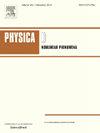Assessment of anti-jamming capabilities in infrared-guided missile systems
IF 2.7
3区 数学
Q1 MATHEMATICS, APPLIED
引用次数: 0
Abstract
Missiles possess immense destructive power and play a decisive role in determining military strength in conflicts. Existing research predominantly focuses on the guidance system level, evaluating missile anti-jamming performance based on the overall missile system and often using anti-jamming probability as the sole metric. However, this approach lacks systematic investigation into the anti-jamming process. To address this gap, this paper establishes a multi-level evaluation system for infrared guided missile, analyzing the missile overall system, guidance system, seeker, and external environment. By employing the Fuzzy Analytic Hierarchy Process (Fuzzy AHP), weight coefficients for each component are calculated using a fuzzy judgment matrix, enabling a comprehensive evaluation and the construction of a multi-level evaluation index system. Simulation experiments were conducted to validate the model’s effectiveness. Using the Latin Hypercube Sampling (LHS) algorithm, approximately 1,000 scenarios capturing the essential characteristics of missile anti-jamming were generated, reducing computational time by around 80% while maintaining accuracy. Experimental results demonstrated a recognition probability exceeding 85% and average miss distances within acceptable limits. Both static and dynamic validation confirmed the model’s robustness, proving its ability to accurately predict missile anti-jamming performance under various conditions. This study provides a solid foundation for future research and improvements in missile anti-jamming systems.
红外制导导弹系统抗干扰能力评估
导弹具有巨大的破坏力,在冲突中对决定军事实力起着决定性作用。现有的研究主要集中在制导系统层面,基于导弹整体系统来评估导弹的抗干扰性能,往往以抗干扰概率作为唯一的度量标准。然而,这种方法缺乏对抗干扰过程的系统研究。针对这一不足,本文建立了红外导弹的多级评估体系,对导弹总体系统、制导系统、导引头和外部环境进行了分析。采用模糊层次分析法(Fuzzy AHP),利用模糊判断矩阵计算各组成部分的权重系数,进行综合评价,构建多层次评价指标体系。仿真实验验证了该模型的有效性。使用拉丁超立方体采样(LHS)算法,生成了大约1,000个捕获导弹抗干扰基本特征的场景,在保持精度的同时减少了大约80%的计算时间。实验结果表明,识别概率超过85%,平均脱靶距离在可接受范围内。静态和动态验证验证了该模型的鲁棒性,证明了该模型能够准确预测导弹在各种条件下的抗干扰性能。该研究为今后导弹抗干扰系统的研究和改进提供了坚实的基础。
本文章由计算机程序翻译,如有差异,请以英文原文为准。
求助全文
约1分钟内获得全文
求助全文
来源期刊

Physica D: Nonlinear Phenomena
物理-物理:数学物理
CiteScore
7.30
自引率
7.50%
发文量
213
审稿时长
65 days
期刊介绍:
Physica D (Nonlinear Phenomena) publishes research and review articles reporting on experimental and theoretical works, techniques and ideas that advance the understanding of nonlinear phenomena. Topics encompass wave motion in physical, chemical and biological systems; physical or biological phenomena governed by nonlinear field equations, including hydrodynamics and turbulence; pattern formation and cooperative phenomena; instability, bifurcations, chaos, and space-time disorder; integrable/Hamiltonian systems; asymptotic analysis and, more generally, mathematical methods for nonlinear systems.
 求助内容:
求助内容: 应助结果提醒方式:
应助结果提醒方式:


